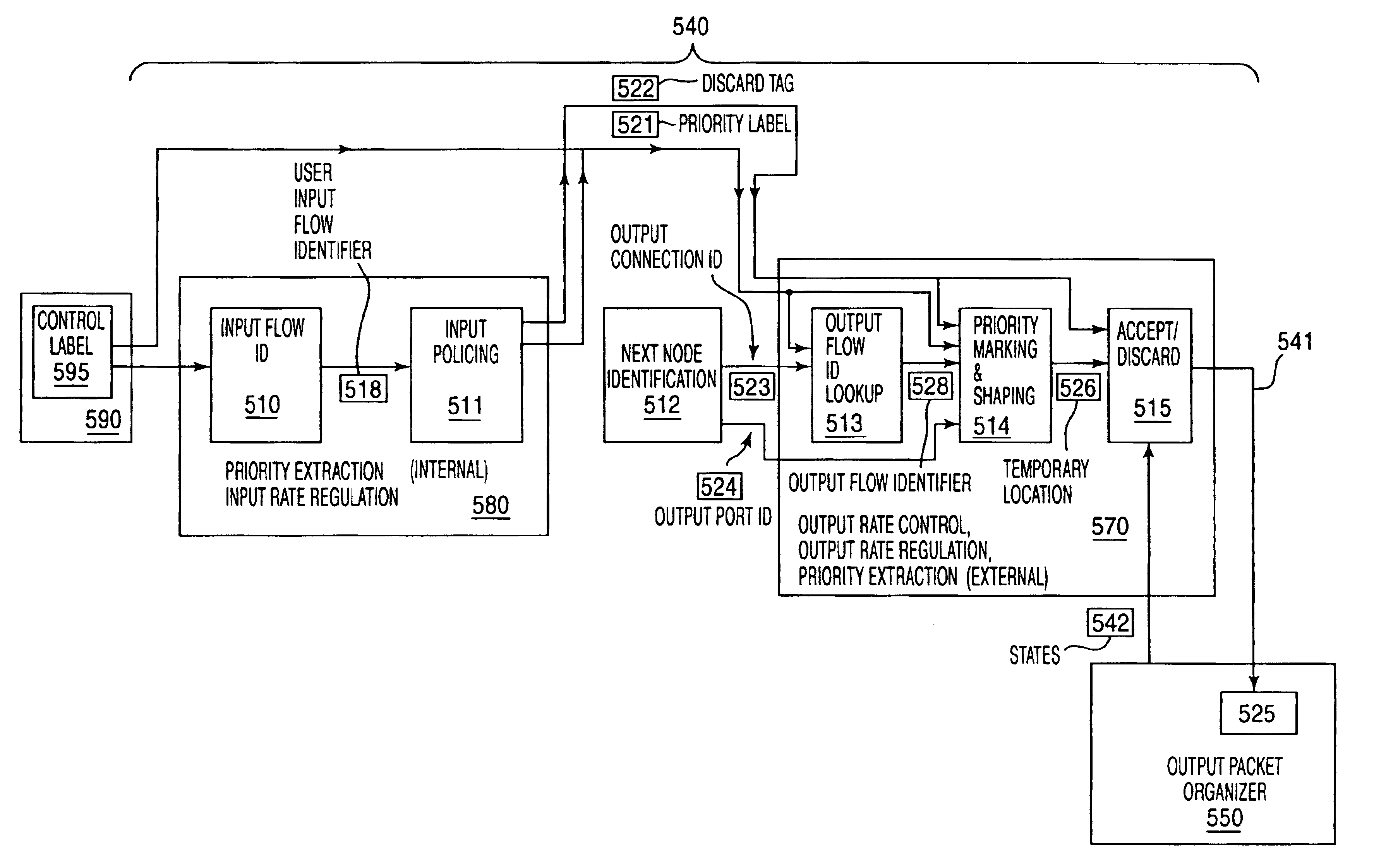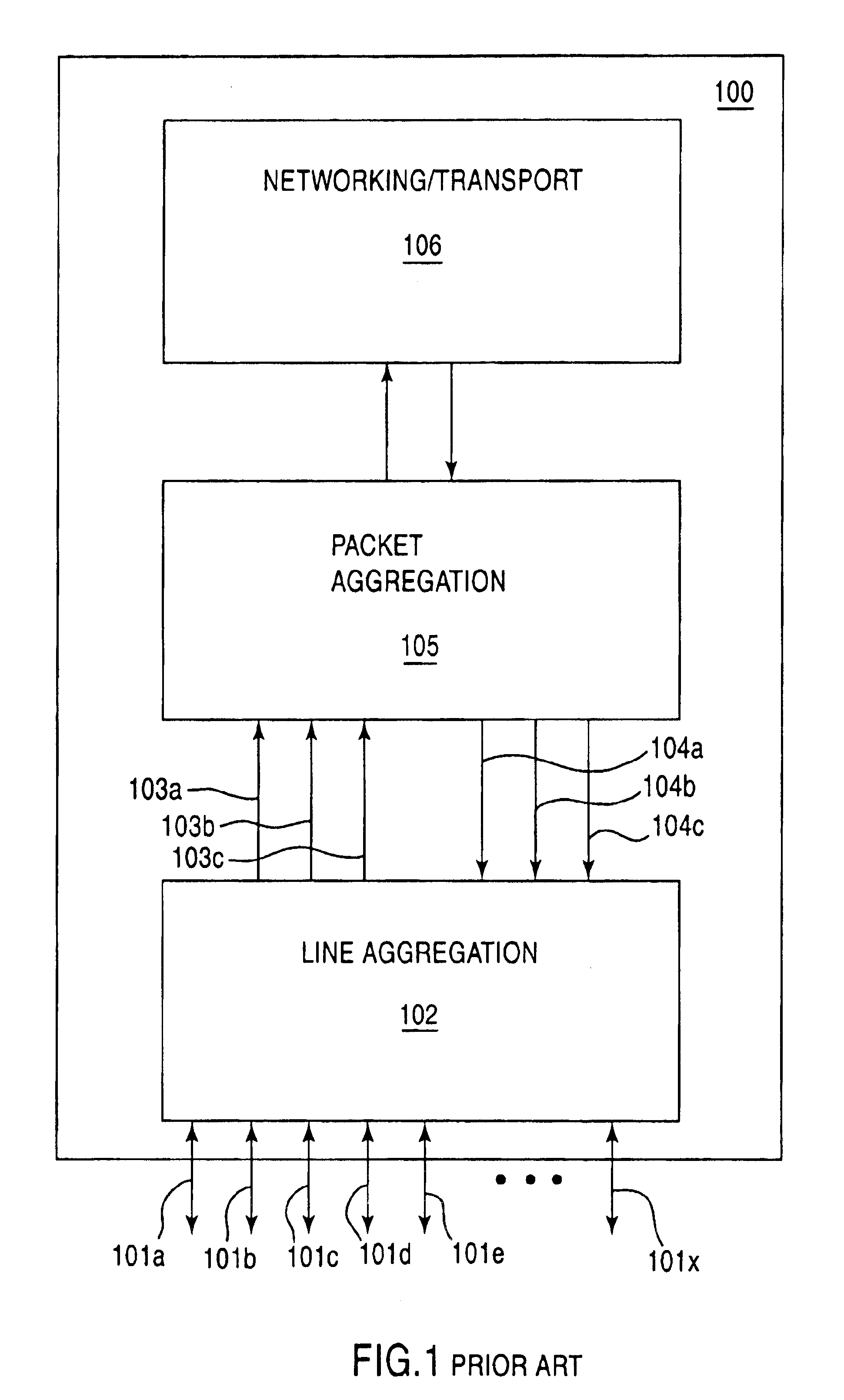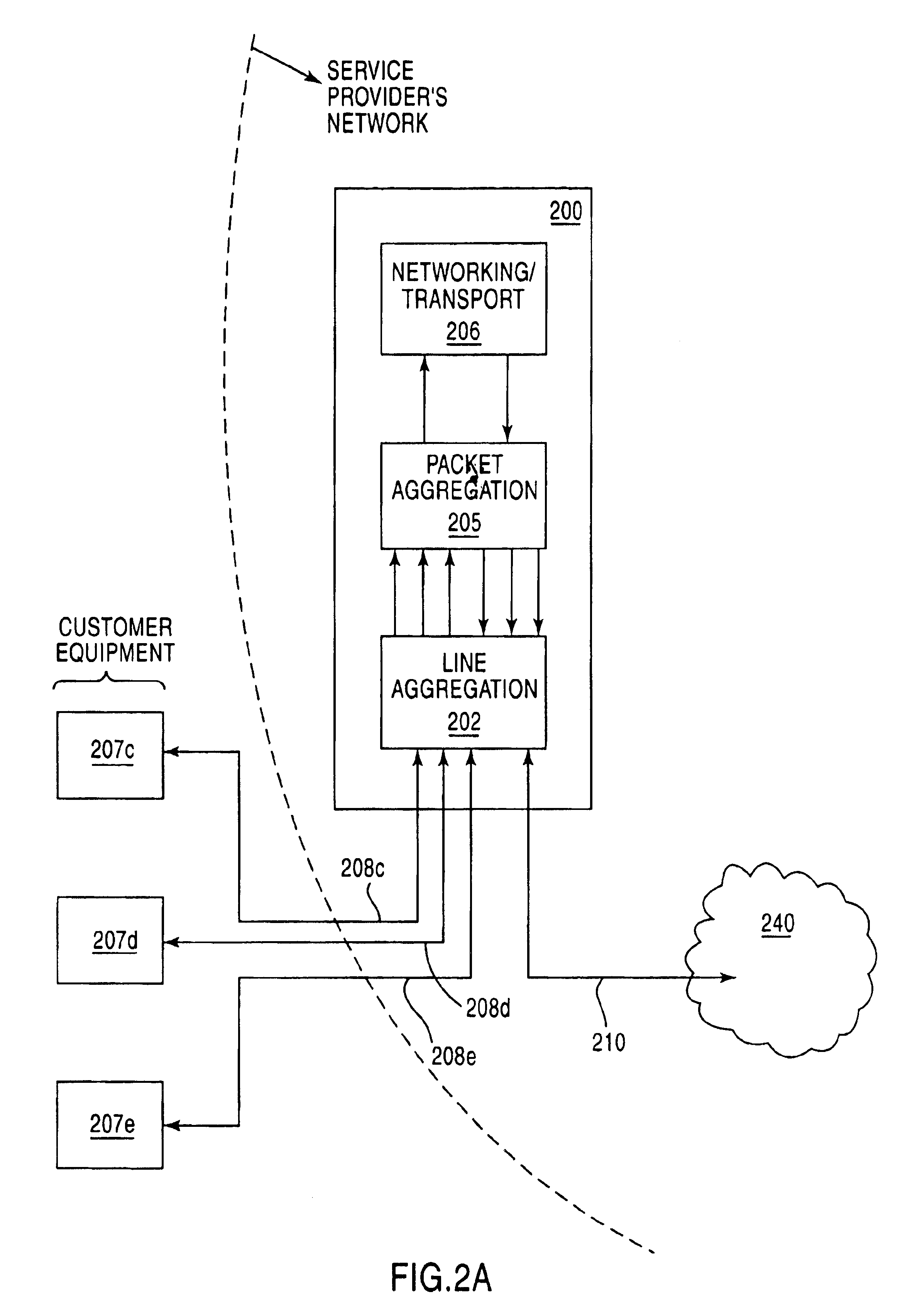Method and apparatus for input rate regulation associated with a packet processing pipeline
a packet processing and input rate regulation technology, applied in the field of network general, can solve the problems of relatively inefficient consumption of network resources, waste of bandwidth, packet networks generally characterized as having poor latency but good efficiency
- Summary
- Abstract
- Description
- Claims
- Application Information
AI Technical Summary
Benefits of technology
Problems solved by technology
Method used
Image
Examples
embodiment 495
[0085]The embodiment 495 of FIG. 4 may be used for an Internet Protocol version 4 (IPv4) application or other applications as well. As shown in FIG. 4, the header information 417 may at least partially include: 1) Source Port Address (SP); 2) Destination Port Address (DP); 3) Source Address (SA); 4) Destination Address (DA); 5) Next Hop Route Address (NHA); 6) Protocol ID (PID); 7) Type of Service (TOS); and 8) Length (L). The relevance of the header based information 417 is apparent to those who practice in the art. The calculated control information 402, in the embodiment of FIG. 4, includes a packet identifier 408, a length indicator 404 (also referred to as packet size), a time stamp insert flag 406 and a record route flag 407.
[0086]The packet identifier 408 indicates where a packet is located in the packet buffer memory. As discussed previously, the pipeline eventually stores packet identifier 408 into an output packet organizer location. In various embodiments, packets may be ...
embodiment 540
[0092]FIG. 5d shows an embodiment 540 of a packet processing pipeline, such as the packet processing pipeline 340 of FIG. 3. A packet processing pipeline 540 is a sequence of stages where various stages are tailored to implement networking related tasks on a packet. Such stages may be referred to as networking stages. Each networking stage is devoted to implementing a portion of the overall processing that a packet can be subjected to in being converted from an input packet to an output packet.
[0093]The order or sequence of the networking stages within a pipeline (which may now be referred to as stages for simplicity) correspond to the order or sequence in which operations are performed on a packet. For example, the packet processing pipeline embodiment 540 of FIG. 5d has six stages: 1) an Input Flow ID stage 510; 2) an Input Policing stage 511; 3) a Next Node Identification stage 512; 4) an Output Flow ID stage 513; 5) a Priority Marking and Shaping stage 514; and 6) an Accept Disc...
embodiment 911
[0157]Recall in the packet processing embodiment of FIGS. 7a and 7b, the user input flow identifier 718b is implemented as a memory pointer that is used by the input policing stage 711a to look up a user input flow. An embodiment 911 of the input policing stage 711a of FIG. 7a is shown in FIG. 9. The look up based upon the user input flow identifier 918b occurs in flow table 720, 920. Flow table 920 shows a left hand column 902, implemented as memory address spaces, having a list 918l-q of the various user input flow identifiers 818l-q of FIG. 8) supported by the system. The right hand column 903 shows a listing of user input flows 919l-q that are identified by each of the user input flow identifiers 918l-q.
[0158]User input flows, as discussed, may be at least partially defined by a combination of input rate regulation and priority parameters. Such terms are reflected in the user input flows 919l-q of FIG. 9. In the flow table embodiment 920 of FIG. 9, the priority parameter is repr...
PUM
 Login to View More
Login to View More Abstract
Description
Claims
Application Information
 Login to View More
Login to View More - R&D
- Intellectual Property
- Life Sciences
- Materials
- Tech Scout
- Unparalleled Data Quality
- Higher Quality Content
- 60% Fewer Hallucinations
Browse by: Latest US Patents, China's latest patents, Technical Efficacy Thesaurus, Application Domain, Technology Topic, Popular Technical Reports.
© 2025 PatSnap. All rights reserved.Legal|Privacy policy|Modern Slavery Act Transparency Statement|Sitemap|About US| Contact US: help@patsnap.com



